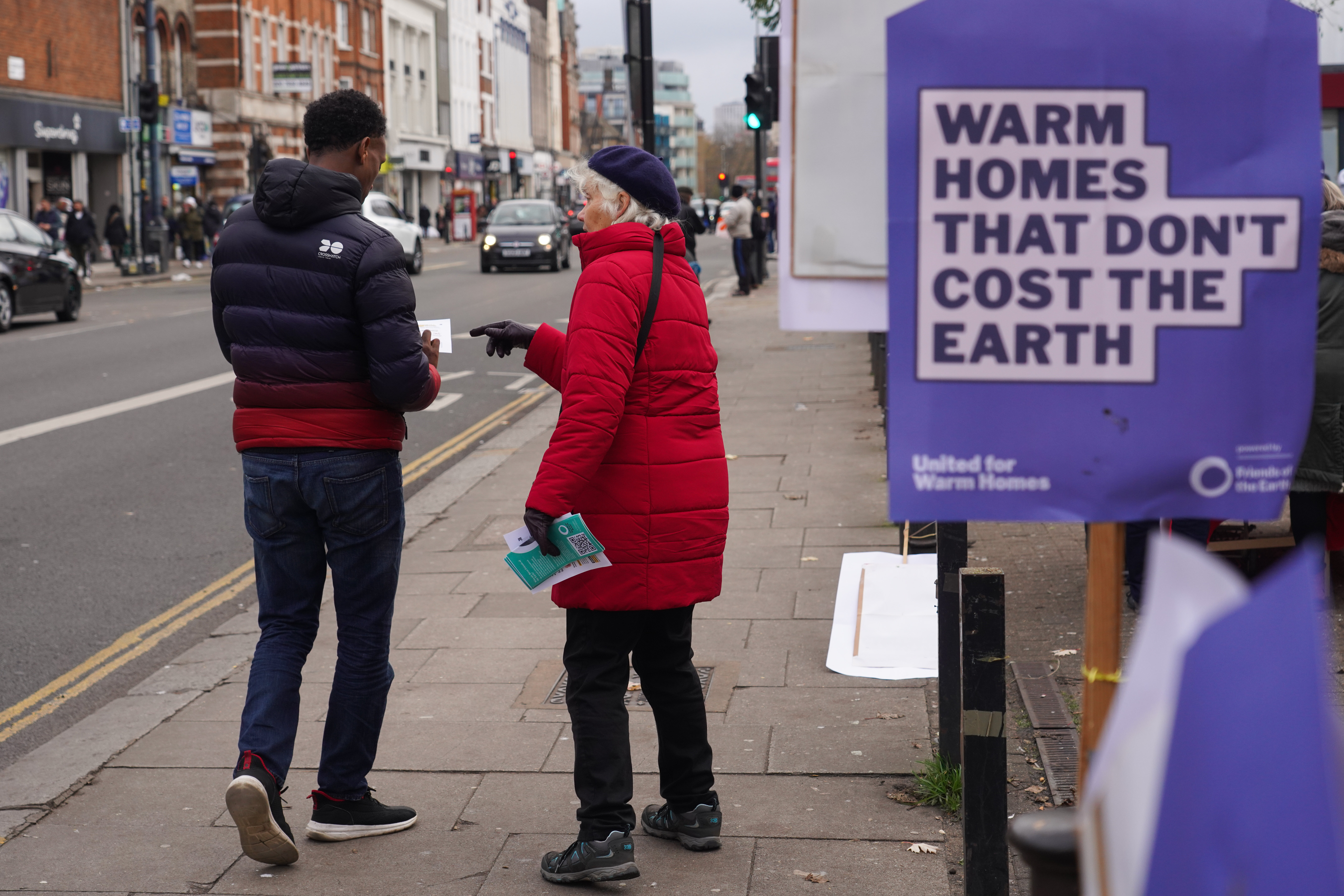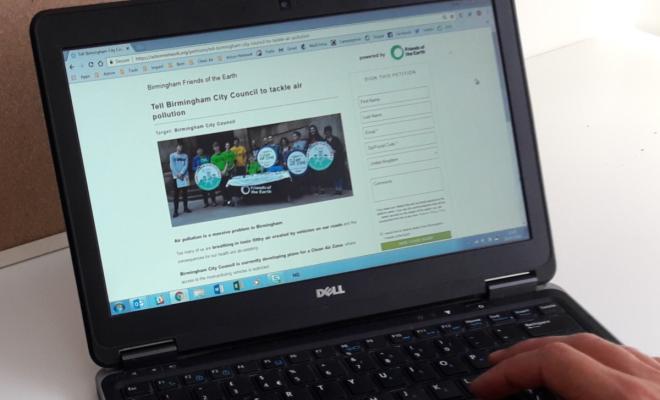17 Jul 2025
Follow our top tips to get started. If you've used any successful tactics that we haven't included, please get in touch - we'd love to add them.
Got something other than a petition to promote? Many of the tips on this page apply to other types of online actions, events and fundraisers.
Before you start telling anyone about your petition you need to make sure it’s ready to be shared. Check out our guide to make sure your petition will quickly attract people and persuade them to add their name.
Sign it yourself and see what happens. Most petition platforms include an automated confirmation email that is sent whenever someone signs. Make sure this email encourages people to share the petition with their friends and family. Share your petition on social media and see how it looks. You’ll need an engaging image to help highlight it.
How to get your first signatures
Ask the core members of your group to sign the petition. Ask each of them to think of 5 or 10 others who might also sign it and start spreading the word. They could start with their friends and family.
Get them to send a short, personalised message asking people to sign and share the petition. WhatsApp can be a quick way to do this you can easily pick which of your contacts to send it to.
Doing this will help get your petition to a position where everyone can see there’s some momentum behind it. Low numbers on a petition can put some people off from adding their name. But if you can quickly get to 100 signatures or more, you’ll be in a great place to say “Look! Lots of people in your community are signing this. Why don't you?”
Identify your audience
Before you start promoting your petition any wider it’s important to think about where you need to gather signatures from.
For example, if your petition is to your local MP or councillor you’ll need to focus on people who live or work in the area they represent. Gathering petition signatures from outside that area is likely to be a waste of time – the target of your petition may choose to ignore or devalue them.
If there’s interest from neighbouring areas could you work with people there and help them set up their own petition? Or could you adapt yours to include neighbouring MPs or councillors instead?
Ask your community
Once you’ve identified the area you want to cover, make a list of the groups, organisations and businesses across your community that you’re in touch with.
Take the personal approach and talk to them one at a time. Draft a template message which outlines the aims of the petition and why their support will help. Stick to 150 words or less. Ask them if they’ll help spread the word, for example could they include it in an email newsletter or share on social media?
Can you identify 5 organisations that could be really useful in promoting the petition or that has a strong shared interest? Follow these up with phone calls and help to build the relationship even further. Would they be prepared to co-brand the petition with you and to deliver greater reach?
Now think about the parts of your community that you haven’t yet reached. Try our community mapping exercise if you’re not sure where to start. Use the template message to start reaching out. Try and build relationships by mentioning any shared connections between your petition and whoever you’re approaching.
A petition can act as a starting point to building new relationships in your community. And with luck your hard work will pay off and word about your petition will start spreading too.
Promote your petition further
Neighbourhood forums
Most local neighbourhoods now have at least one Facebook group where people talk to each other about what’s going on.
Now the petition has some signatures it will feel like there’s momentum behind it. Create a template Facebook post and spend some time looking for places to share it. Be ready to reply to comments quickly, this will help your petition feel like a live issue.
Some community forums require posts to be moderated and may block what they consider to be ‘political’ content. If you think might happen to contact the group admins in advance to explain that this is a really important local issue.
Look for other online networks, message boards or forums that exist in your community. They can offer an easy way to reach a lot of people at once.
Take a look at our guide to taking a good photo if you need help with images to support your posts check. You can also look in our image library. Find out more and apply for access.
Social media
Social media platforms can provide a way to reach a wide audience. Follow our tips to get the best from social media for your petition.
- Create shareable content – social media is based on sharing. You need to use compelling stories, visuals and videos that that illustrate the petition's purpose.
- Plan, vary and repeat your content – use a calendar or planner to plot how and when you’ll use social media to promote your petition. Repeat your message regularly but don’t say the same thing every time. Can one of your group create a series of posts to use?
- Look for opportunities – find social media groups, pages or profiles that relate to your petition’s topic or location. These are good places to start sharing your petition, especially in the early days.
- Use hashtags - relevant hashtags can increase the visibility of your petition and help you engage with broader conversations.
- Tag others – social media offers an easy way to engage with groups, businesses and organisations that you know (and even those you don’t). Ask them to help share the petition.
- Consider paid promotion – boosted Facebook posts are the best place to start, if you want to put a small amount of money behind your petition.
- Choose the right platforms –Facebook and X/Twitter are more suited to gathering petition signatures than Instagram. See our social media guide for more.
Promoting a petition be an opportunity for members of your group to step up and share some of the responsibility. Can you build a small team to take on the job? Take a look at our guide on distributing leadership within your group.
Get emailing
For some audiences email is still one of the most effective ways to communicate. Share the petition repeatedly with your group’s email list and ask everyone to sign it. Don’t just do it once. And don’t bury your petition in a monthly newsletter alongside lots of other stories. Here’s a plan to help your petition stand out.
- Send an email to your list that only talks about the petition, nothing else. Use a nice simple subject line e.g. Sign our petition for clean air. Write no more than 250 words. See our guide to writing an effective email for more.
- One week later send a reminder email. Exclude those who’ve already added their name. Keep the email simple again. Don’t be afraid to ask more than once. People often need a couple of reminders before they take action.
- You can re-use your original email and add a few sentences at the top e.g. Did you see my email last week. X people have now signed the petition. Will you add your name? Re-use the subject line too e.g. Re: Sign our petition for clean air
- Two weeks later send an email to everyone who’s signed the petition and ask them to share it with 3 other people. Remind them how many signatures you have or give them a target to aim for e.g. Can you help us reach 500 signatures?
- Now keep talking to your email list about the petition. If your group sends out regular newsletters mention it as often as you can. Ask everyone who’s signed it to share it again. Send at least one more email to everyone on your list who hasn’t signed it.
Use targets and deadline to give your petition a hook. Are you close to a milestone number of names? Ask people to help you reach it. Are you handing the petition in? Use that as a deadline.
Think about all the people who’ve signed your petition and how you can invite them to get more involved in your group. Take a look at our guide to keeping your email list interested to help make sure they don’t just sign it and then hear nothing.
Get out and about
Make paper copies of your petition to gather signatures on stalls. Fill in the first row of each sheet in BLOCK CAPITALs to help set the tone. Approach it in 15-minute blocks and ask every other passer-by to sign the petition, then take a quick break before repeating.
A good day on a stall can get several hundred names. Use our conversation starter guide for tips on what to say.
Think about busy places to hold a stall, like the train station, supermarkets, shopping centres or outside schools. Can you order resources from Friends of the Earth to help?
Think about how to make your stall fun and interactive to draw passers-by in.
What about a whiteboard with a simple activity for people to do e.g. stickers or sticky dots to answer questions about the topic of your petition. Craft activities can help to engage people too. Christian Aid’s craftivism guide is a good source of ideas.
Make A4 laminated posters for notice boards and shop windows. Add a QR code to help people find your petition quickly and easily on their phone. Use a link shortener so the petition link is easier to read on printed materials. Try Bit.ly or tinyurl to get started for both.
Plan upcoming opportunities to promote your petition in person. Research local festivals, fetes and fairs and book stalls at as many as possible. See our guide to holding a stall for help.
Door-to-door campaigning also works well to raise awareness and gather signatures. Mobilise volunteers to take a street-by-street approach with paper sheets and clipboards. They can do this in their own neighbourhood or team up and cover a specific area together.
Get in the media
Local media outlets can be a great way to spread the word and gather petition signatures. But you’ll need to make your petition stand out from other stories.
If you’re writing a press release or letter to the editor can you include quotes from your members of the public to add life to it? Talk about key milestones and targets. For example, are you close to handing the petition or just starting out? Talk about why the petition matters to local people and the impact they can have by adding their name.
Set up a photo opportunity to attract attention. Don’t forget about the unusual suspects e.g. local hospital radio or local TV channels. Look for news stories about topics related to your petition – add a link to it in the comments section.
Have a look at our guide to getting local media coverage if you need a few tips to get you started.
Think outside the box
Gathering petition signatures is hard work. Those names won’t just add themself. Think outside the box and don’t just target your usual haunts – reach out to community centres, places of worship, local businesses and spaces in the neighbourhood you’ve not visited before. Use our community mapping exercise to get started.
Here’s a non-exhaustive ideas bank to help get you started. Have we missed something? Let us know and we’ll add it.
- Food banks
- Neighbourhood groups e.g. over 60s clubs, gardening groups, youth groups like Scouts, Girl Guides and Woodcraft Folk.
- Local councillors and MPs – often have email lists they share news with.
- Cafes and shops – could they put a poster in the window?
- Wholefood shops
- Places of worship – offer to speak at services or meetings about the petition.
- Schools, colleges, universities
- Libraries
- Swimming pools and sports centres
- Community centres
- Housing associations and renter unions e.g. ACORN
- Local businesses
- Local celebrities or influencers
- Exercise classes and groups
- Sports clubs and centres










